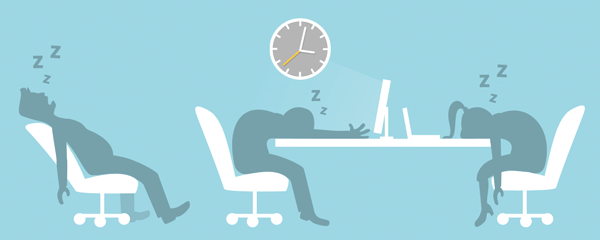October 5, 2016
Can shorter workdays mean higher productivity?

More work hours = more output. Right? New developments in Sweden suggest otherwise.
A growing number of Swedish employers are moving to a 6-hour working day in a bid to lift productivity, counter burnout and make people happier. These organizations (which include Toyota service centers, retirement homes and hospitals) have found that a shorter workday can decrease staff turnover, enhance creativity, inspire loyalty and boost profits as well as efficiency. Impressive benefits by anyone’s standards!
But will this 6-hour workday model catch on in nations like America, where clocking long hours is the norm and ‘presenteeism’ sees workers burning the candle at both ends to prove they’re up to the job? This ambitious, workaholic mentality is as much a part of US culture as hot dogs and baseball, and is worn proudly like a badge of honor. Yet research shows that cranking out more hours at your desk doesn’t necessarily pay off when it comes to output, and the Families and Work Institute discovered that working longer can even damage productivity as people are more likely to make mistakes and get sick.
Clearly there is a link between wellbeing and productivity, so how do we create a workplace that nurtures a balanced relationship between intense work and time to chill? Here are some ideas for making the shift.
1. Set the tone

If you’re a leader, it’s up to you to set a positive tone for your company culture and embark on active steps to create a healthy work environment for your team. People take their cue from you, so send a clear message that wellness matters. Praise teammates who work sensible hours, go on full lunch breaks, use their annual leave and take time to rest after a busy stretch, and rap the knuckles of those who don’t. Practice what you preach by stepping away from your desk once in a while, and openly discuss the ways you take care of yourself with your team. But don’t stop there. Make the most of internal communication channels to raise awareness about work-life balance by circulating blogs, factsheets and informative websites; and use posters, noticeboards and company newsletters to promote your message in visible ways. The more people are educated about good work habits, the more likely they are to take measures to improve their own situation and to look out for those they work with.
2. Take frequent ‘pulse checks’

Schedule regular one-to-ones with team members to check how they’re doing and catch any early signs of stress. What’s their energy like? Are they feeling overwhelmed? How’s their morale? Did they come back refreshed after their recent vacation? Remember that being super busy all the time doesn’t mean that person is more productive or engaged. They may have fallen into bad habits such as multitasking or being constantly plugged in to technology which disrupts their focus. It’s also worth keeping an eye on people who always volunteer for extra tasks, as they could be taking on more than they can realistically chew because they’re hungry for more brownie points. To supplement your one-to-ones, use DropTask [now Ayoa] to drop subtle hints to colleagues who might be slipping when it comes to their wellbeing. All it takes is a quick comment urging them to re-align or take a break from a task.
3. Be flexible

According to The Harris Poll, 89% of Americans believe employers should offer flexible work hours so long as the job gets done, and over half of American workers (52%) feel they would perform better at their jobs with more flexibility. Let’s face it, one-size-fits-all policies are too rigid and don’t account for the fact that people are individuals and work optimally in different ways. Encourage your teammates to figure out what kind of schedule works best for them and be open to ideas for alternative approaches, such as remote working or 4-day workweeks.
Job satisfaction soars when people feel valued and are given the opportunity to make small shifts in when, where and how their work is done without being micro-managed every step of the way. Putting people in charge of their time motivates them to knuckle down and give their total attention, dodging distractions like nonessential emails, social media or meetings – meaning more work gets done. DropTask [now Ayoa] is an ideal tool for ensuring work stays manageable in a flexible environment. In-app notifications keep teams and managers up to speed with every project, so the ball never gets dropped. And completed tasks are all cataloged in one place, making it easy to review performance based on what people have achieved and not the number of hours they spent in the office.
How do you encourage personal and professional balance within your team? Do shorter workdays or other flexible arrangements work for you? We’d love to hear your experiences and advice in the comments below.
New to Ayoa? Discover more and sign up today.
